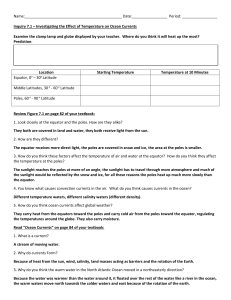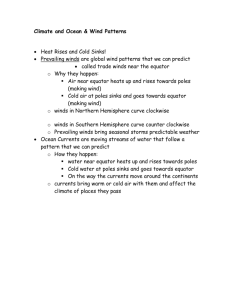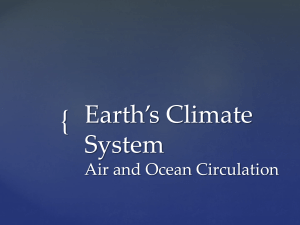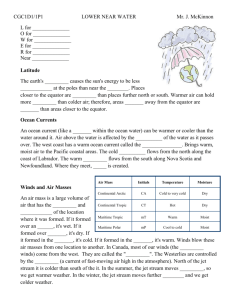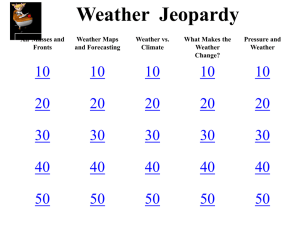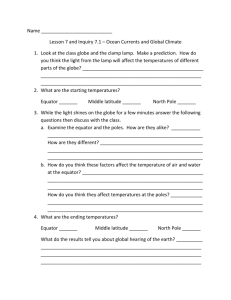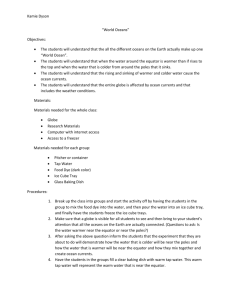note
advertisement
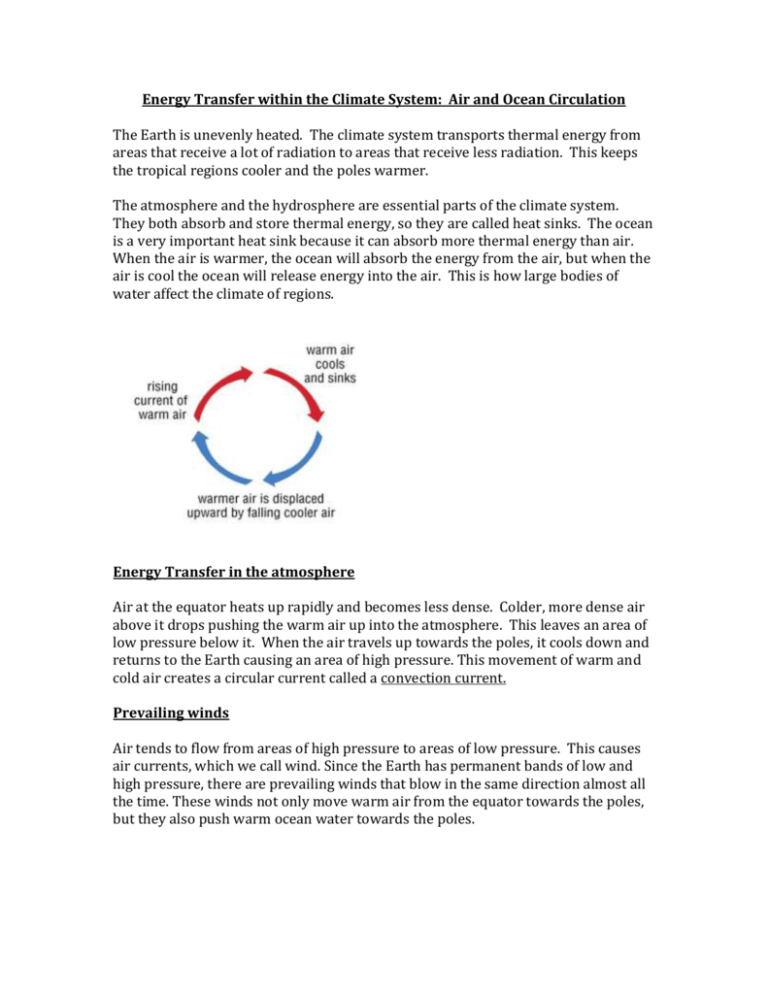
Energy Transfer within the Climate System: Air and Ocean Circulation The Earth is unevenly heated. The climate system transports thermal energy from areas that receive a lot of radiation to areas that receive less radiation. This keeps the tropical regions cooler and the poles warmer. The atmosphere and the hydrosphere are essential parts of the climate system. They both absorb and store thermal energy, so they are called heat sinks. The ocean is a very important heat sink because it can absorb more thermal energy than air. When the air is warmer, the ocean will absorb the energy from the air, but when the air is cool the ocean will release energy into the air. This is how large bodies of water affect the climate of regions. Energy Transfer in the atmosphere Air at the equator heats up rapidly and becomes less dense. Colder, more dense air above it drops pushing the warm air up into the atmosphere. This leaves an area of low pressure below it. When the air travels up towards the poles, it cools down and returns to the Earth causing an area of high pressure. This movement of warm and cold air creates a circular current called a convection current. Prevailing winds Air tends to flow from areas of high pressure to areas of low pressure. This causes air currents, which we call wind. Since the Earth has permanent bands of low and high pressure, there are prevailing winds that blow in the same direction almost all the time. These winds not only move warm air from the equator towards the poles, but they also push warm ocean water towards the poles. Prevailing Winds and Climate Zones Prevailing winds also play another factor in determining a climate zone. a. When winds travel over oceans they pick up water vapour, when the wind reaches land the water vapour condenses to form rain. b. When winds travel from the North Pole, it will be cold and dry This wind will make a region drier and colder. Energy Transfer in the Oceans As water travels towards the poles, it gets colder . It also becomes more salty as surface water evaporates and sea ice forms. Both of these factors make the water at the poles dense. This makes the water sink to the ocean floor. Warmer surface water from the equator then flows toward the poles to take its place. This process is called thermohaline circulation. This is an enormous conveyor belt that is slowly moving water and thermal energy from the equator to the poles. Ocean Currents and Climate Zones Ocean currents have a strong effect on the climates of nearby land. a. Warm ocean currents heat the air above them. When the warm, moist air reaches land it warms the land and produces rain. b. Cold ocean currents cool the air above them. When the dry, cool air reaches land it creates desert areas.

